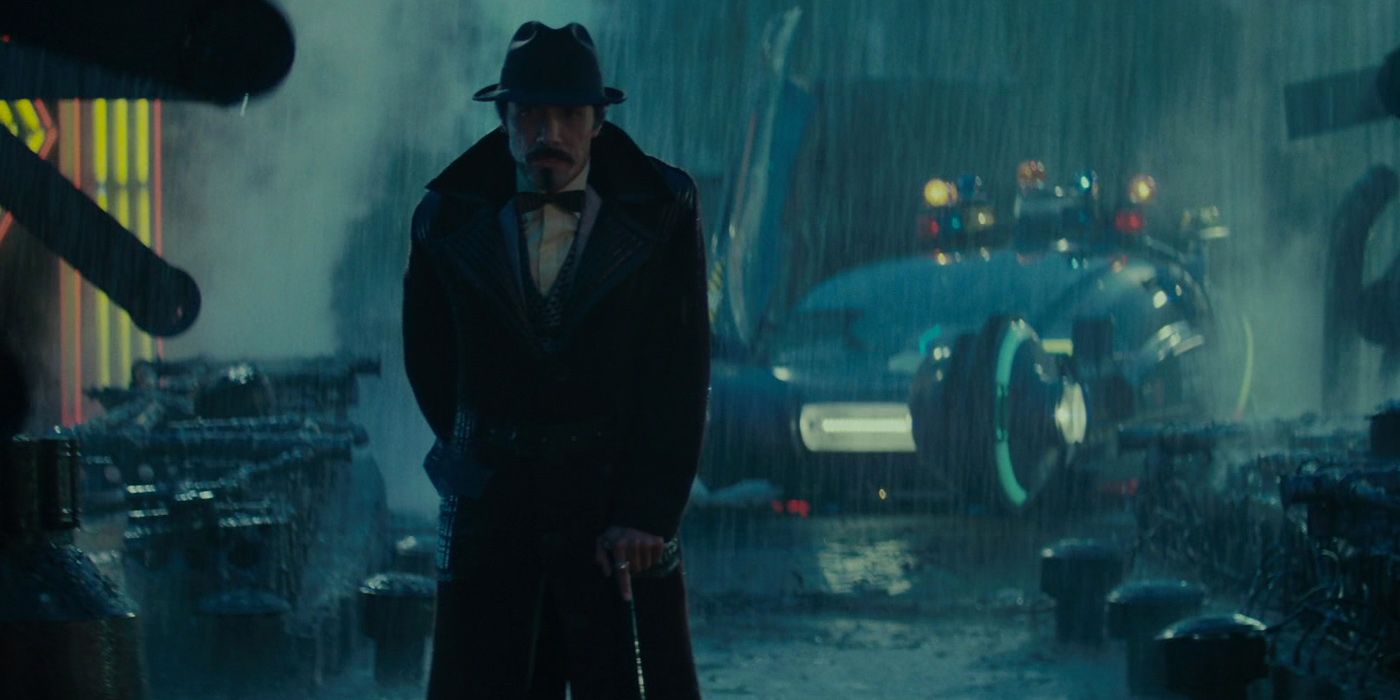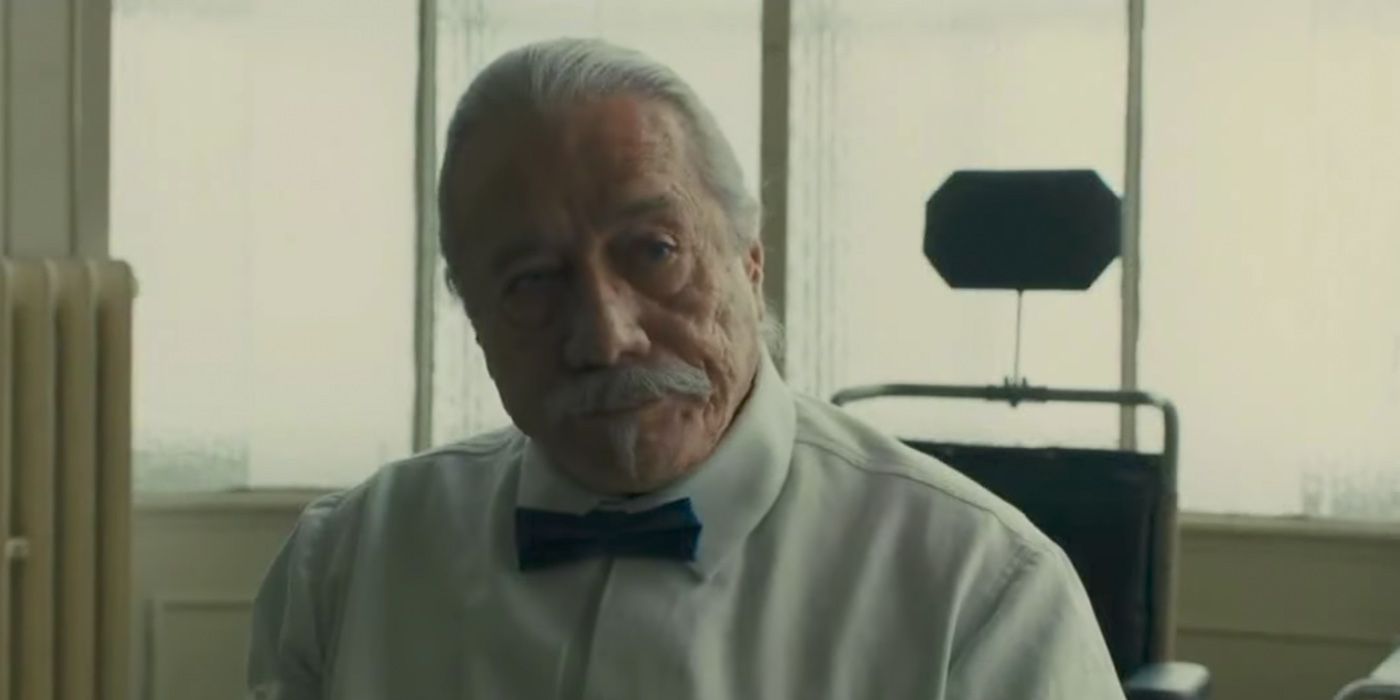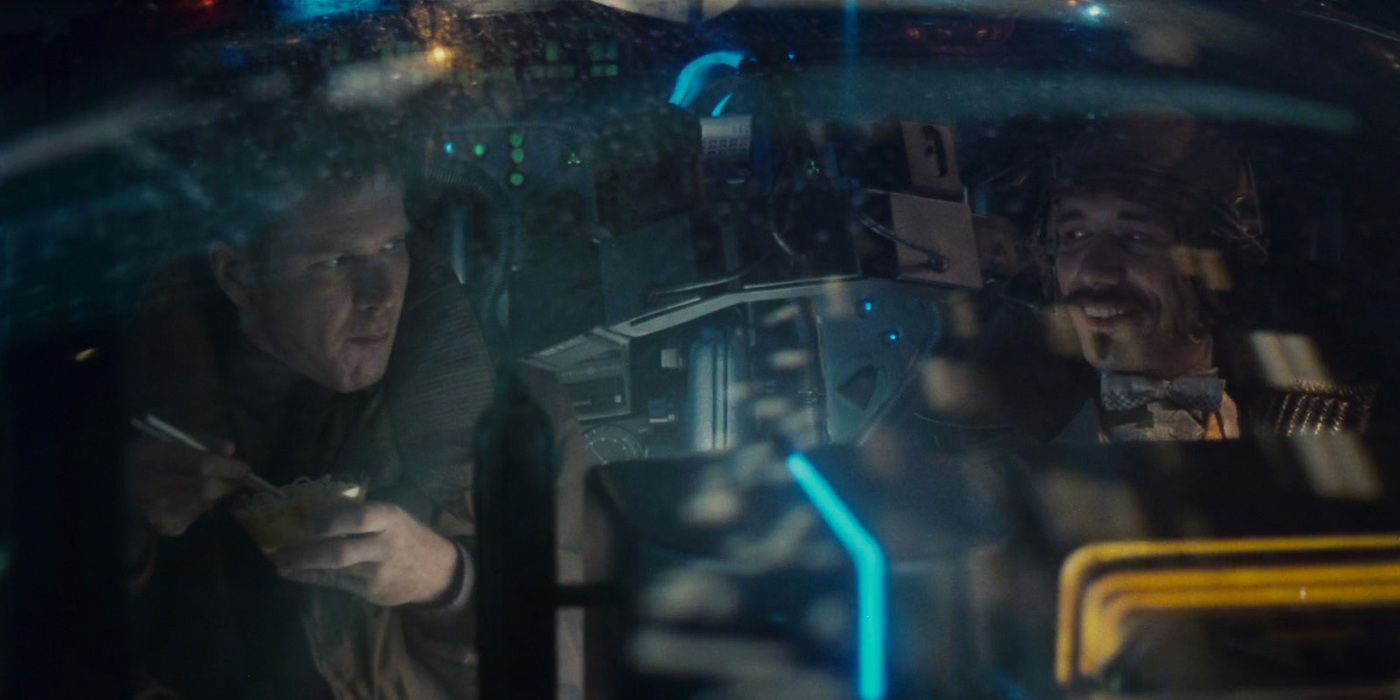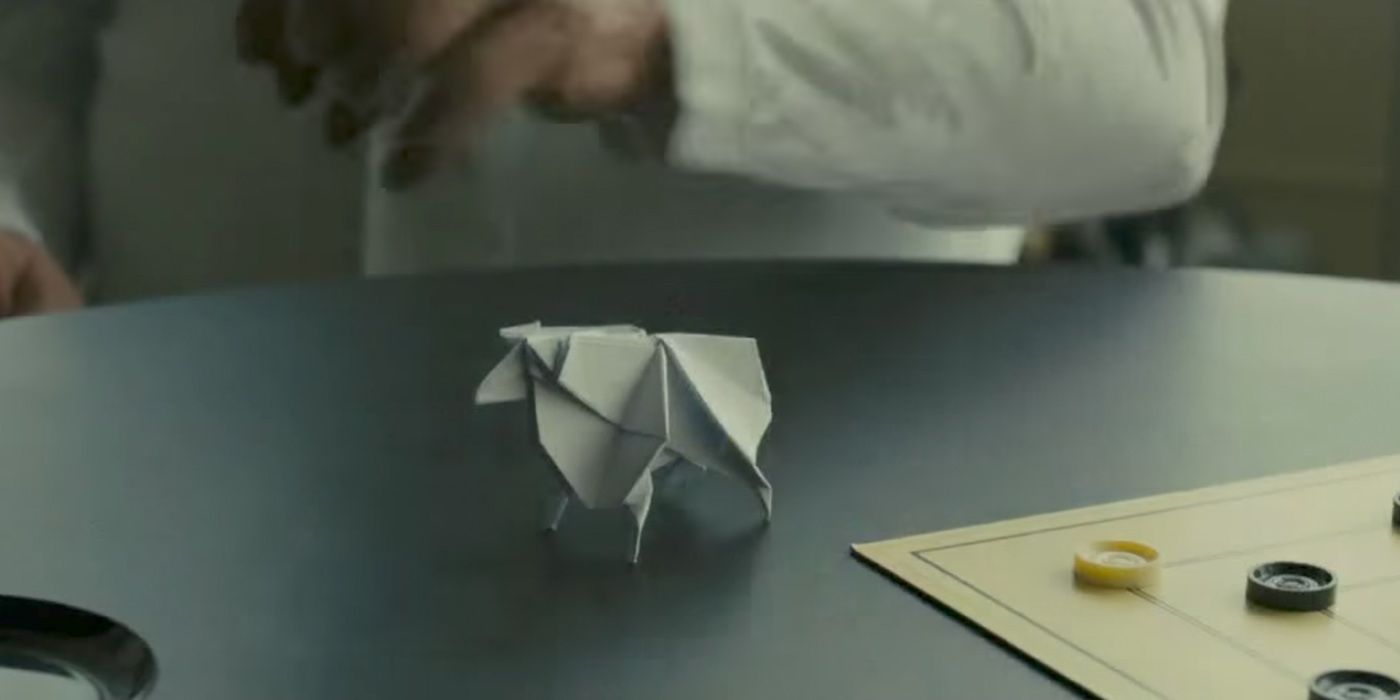Major spoilers for Blade Runner 2049.
–
Blade Runner 2049 is an exemplary sequel for its complete lack of plot holes and contrivances in relation to the original – with the exception of one key retcon regarding Blade Runner “partner” Gaff.
While legacy-quels – belated follow-ups to fan favorite classics – tend to be full of reverence to the original, they typically also wind up creating their fair share of plot holes. Star Wars: The Force Awakens by its existence calls into question the resolution of the original trilogy. Creed effectively made the ridiculous antics of Rocky IV (and, if you really want, Rocky V) somewhat emotive. And George Miller was so free-and-loose with his attention to the original Mad Max trilogy that some believe Fury Road doesn’t even follow the original Rockatansky.
Denis Villeneuve’s Blade Runner 2049 mostly manages to sidestep this problem. At the center of the narrative is an explanation of what happened after the very end of the original (although not a resolution to the perennial “Is Deckard a replicant?” mystery), but never does the twisting plot lead to a contradiction. Except in one area: Gaff.
Gaff in the Original Blade Runner

Played by Edward James Olmos, Gaff is one of two other Blade Runners we see in the original film. Introduced dragging Deckard out of retirement to face the Roy Batty threat, he works with Rick in the early stages of his investigation, ferrying him around from LAPD HQ to Tyrell’s to the rogue replicants’ flat. He then reappears at the end to passively congratulate Deckard for beating Batty and warning him that Rachael is still a target.
What makes Gaff so memorable despite his small role in the narrative is his ephemera. Decked out in vibrant-yet-smart future-wear and speaking in a mash-up language called Cityspeak (which any article is obliged to point out Olmos created himself), he plants scene-capping origami figures mocking Deckard: a chicken when he refuses to return to duty; a man with an erect penis when researching the replicant’s flat; and, most ironically, a silver unicorn as Deckard escapes with Rachael. That remains the movie’s biggest hint that our protagonist was, in fact, a replicant, suggesting the dream sequence involving a unicorn (in the Director’s and Final Cuts) was an implant. In the Theatrical Cut that was missing, but for good measure he instead explicitly asked, “But are you sure you are a man?“
Related: Which Is The Best Version of Blade Runner?
Those final moments show some empathy in the pair’s relationship – a warning of the truth or that he’ll be coming – but, for the most part, they’re not exactly chummy. Deckard’s reaction to Gaff at the start indicates they’ve not met before – in the Theatrical version’s monologue he states he saw him around before but presumes he was only recently promoted to Blade Runner – and when working together they barely share a word.
Gaff In Blade Runner 2049

Gaff returns in Blade Runner 2049 for one scene early on in the film. Obviously 35 years older, he’s retired from blade running and lives in a futuristic care home. He’s approached by K who, after discovering that Deckard is intrinsically linked to the pregnant replicant he’s found the remains of, wants to learn more about him from his former partner.
The main takeaway from this scene is the maintaining of the original ending’s integrity. It was always intended to be coyly ambiguous if Deckard truly was a replicant, and that’s exemplified here by Gaff himself being convinced but the film making it very clear that’s just his opinion. How he knew about the unicorn or if it was a coincidence isn’t even glanced with, but his delivery in 2049 leaves the question hanging in much the same way as it was in 1982.
What we’re concerned with, however, is how he talks about his prior relationship with Deckard. He regards them as fully-fledged partners put together out of their shared desire for solitude; they both wanted to work alone and this was the best fit solution. From brief encounter to long-term partners: that’s quite a step away from what we saw in the original.

What the Gaff Change Means
The Gaff of Blade Runner is a strange-talking enigma who Deckard barely gives a second glance to. In 2049, he looks back semi-fondly on their time together, regarding it as a period of shared endurance. Considering that the original frames that period as days – if not a single 24 hours – something feels off.
It’s no coincidence that this scene is one of the film’s most self-aware moments. The Gaff cameo alone is drawing attention to the real world franchise – it’s handled well by Villeneuve so this isn’t a criticism, but it’s certainly fan service – and at the end he presents an origami sheep; a throwback to his habit and a sly criticism of the replicant cop interviewing him, it’s also a reference to the title of Phillip K. Dick’s source novel, Do Androids Dream of Electric Sheep. There’s a lot of reading to be made into that, but given the scene it’s in, it seems to be a meta callsign. At the least, it pulls you into the real world enough to notice that his lines don’t match up. Why?
Perhaps, given his age, Gaff is just going senile and misremembering his time working with Deckard. Or, making that a little less depressing, it’s the film highlighting how the passage of time alters perception and memories; the importance of the length of the partners’ time together ceases to matter. The reliability of memory is at the center of Blade Runner 2049 – it’s what sends K off-book and ultimately resolves the mystery of Deckard’s daughter – so it would be fitting for that to be factored in through some other, less explicit means; especially those that could be flagged as plot holes.

That said, it could be more fuel for the raging fire of the replicant theory. In 2049, Wallace posits that Deckard may have been inserted just before the Batty case with the purpose of falling for Rachael. Were this true, Gaff’s recollection is technically accurate; he would have worked with him for his entire career, just not as long as he makes it sound. That would mean the entire scene is needlessly flavorful presentation of something simpler, although we are talking about someone who communicates his real thoughts with folded paper, so he’s not exactly the most straightforward wordsmith. And, there’s the alternate possibility that he could be hiding something; if Deckard’s a replicant, Gaff was presumably in on it – a Tyrell chaperone. Regardless of intended purpose, the wording definitely feels to be done to keep their true history vague and maintain the broad possibility of Deckard being artificial.
–
When it comes down to it, though, this is a slight retcon mainly for the purpose of giving Olmos a recollective scene that ties into Blade Runner 2049‘s main plot. If we went with a plain recounting of the events of Blade Runner, there’d be little reason for K to seek out the incidental Gaff in the first place; you need that greater relationship, even if it’s a continuity-flubbing tease.
Next: Blade Runner 2049’s Ending Explained
Key Release Dates

Blade Runner 2
Release Date:2017-10-06




